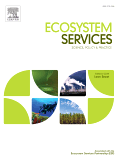Biodiversity draws the ecotourism crowd
Add Summary

Nature – if you support it, ecotourists will come. Managed wisely, both can win.
The balancing act of protecting and fostering biodiversity with hordes of tourists in pristine nature parks is a global challenge.
Researchers at Michigan State University (MSU) sought to understand the complex relationships between biodiversity and nature-based tourism. Their findings, in this month’s Ecosystem Services, indicate there are pathways to having it all – protected areas with a rich variety of animals and plants and thriving tourism. In fact, the better the biodiversity, the more tourists will visit. What it takes to balance it is careful, holistic conservation strategy.
”Nature-based tourism is a telecoupling process that links tourists with the world’s natural wonders,” said Jianguo “Jack” Liu, director of MSU’s Center for Systems Integration and Sustainability (CSIS). “It is increasing rapidly worldwide and has broad implications for the environment and human well-being.”
In the article “Global relationships between biodiversity and nature-based tourism in protected areas” examines the interplay between biodiversity and tourism in 929 protected areas. The authors find for each 1 percent increase in biodiversity, there is a .87 percent increase in annual visitors.
Min Gon Chung, lead author of the paper and a PhD candidate in MSU-CSIS, said that people are more likely to flock to areas that are dedicated to protecting biodiversity. Protected areas managed mainly for biodiversity conservation have nearly 35 percent more visitors than those managed for mixed use.
Chung noted many of these areas are the world’s larger, older reserves, and those with easy access to large urban areas are prime targets for ecotourism. Having a higher elevation (which usually means comfortable temperatures) and high national income levels are also pluses.
“What we are learning is that you can’t just want to protect biodiversity by rejecting people, but you also can’t forget to be dedicated to nature preservation,” Chung said. “Good, strategic management that looks at any sides of sustainability will be key.”
Management plans that consider both biodiversity and local community participation could enhance the economic development that surrounds and thus provide livelihood benefits to the local residents and reduce economic inequalities, the study notes. In some places where populations and prosperity grow, so does the demand for natural resources. The author’s stress the importance of understanding those demands, as well as understanding such demands can come from distant places.
The paper’s third author is Thomas Dietz, another CSIS member and MSU University Distinguished Professor of Sociology and Environmental Science and Policy.
The work was supported by the National Science Foundation, NASA, MSU’s Environmental Science and Policy Program, Sustainable Michigan Endowment Project and Michigan AgBioResearch.



 Print
Print Email
Email





